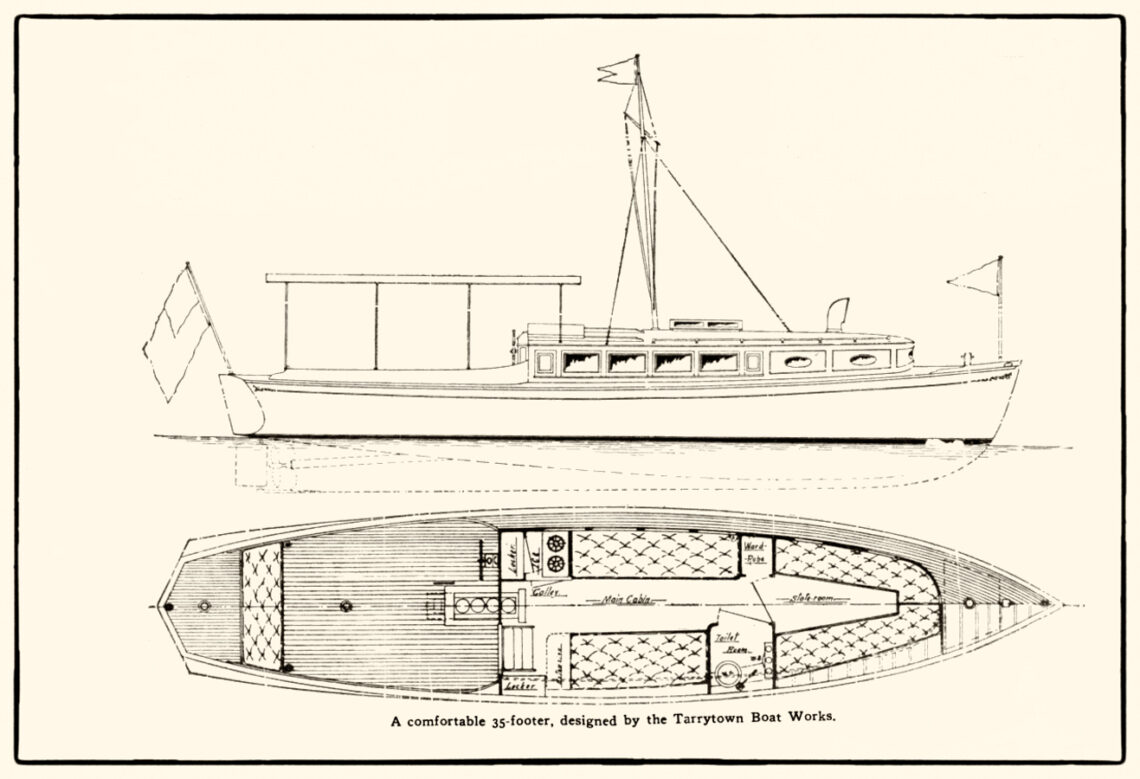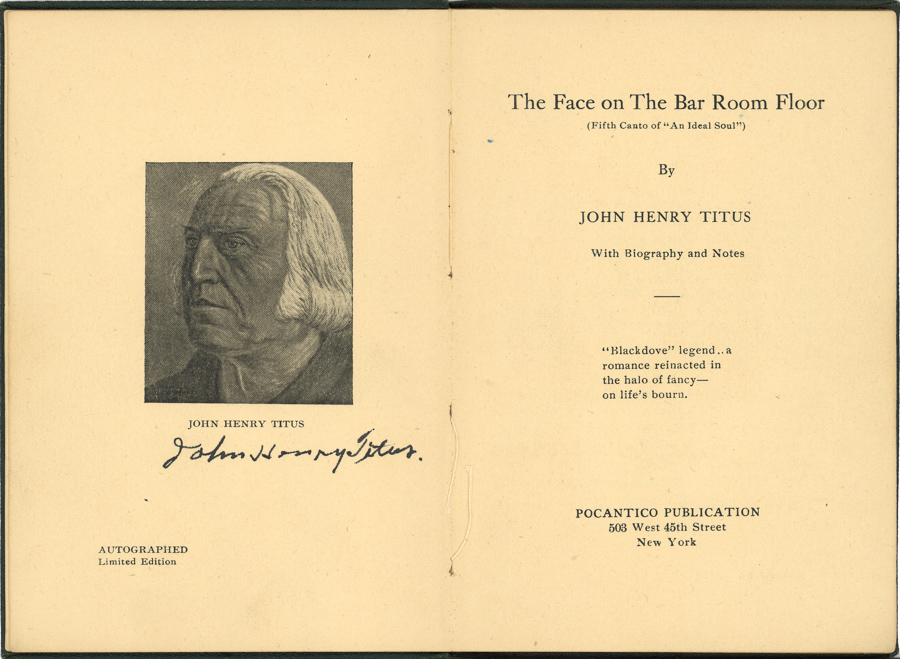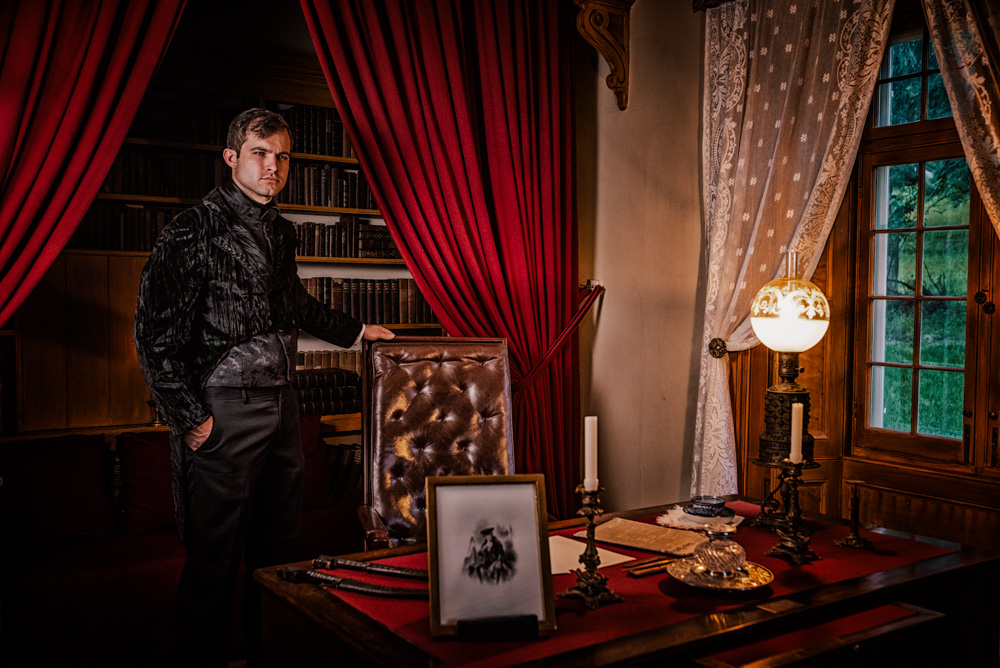-
A Ghost of a Castle: The Haunting of Miss Mason’s School
High atop the ridge to the east of the village of Tarrytown, sat the dramatic Castle Ericstan. Today it is lost from the landscape, but once it had been a proud if not foreboding figure looming over the town from it’s perch. In about 1855, Merchant John J. Herrick commissioned the famous 19th century architect Alexander Jackson Davis to build him a grand residence in a region burgeoning with wealthy secondary country houses. Davis had already designed and completed Paulding Manor (what is now Lyndhurst) not far down the road, and was known for his striking architectural vision in the gothic revival style. Herrick was a respected businessman and he…
-
A Slice of Tarrytown Bakery History
Before the rise of supermarkets in the 1950s and 1960s, Main Streets across America looked very different than they do today. Small bakeries and other specialized food stores were much more common than now. Many also delivered to homes. While records are sparse, we’ve compiled a short compendium of historic Tarrytown bakeries. Today as we witness a resurgence of fresh, locally produced food, bakeries in particular have flourished. Find contemporary Tarrytown and Sleepy Hollow bakeries at VisitSleepyHollow.com. Breitenbach’s Bakery John C. Breitenbach founded his eponymous bakery in New York City in the 1880s. It grew into a substantial operation with four retail stores and a wholesale business supplying goods to…
-
The Devil’s Footprints
Sleepy Hollow Country is steeped in folklore, but few tales are as peculiar as the story of the devil’s footprints in the village of Croton-on-Hudson. We stumbled across this geological phenomenon while sifting through newspaper archives for information on the Black Horse Tavern, a notorious Revolutionary War era public house on the bank of the Croton River. Below the headline “The Devil’s Footprints” ran the lede “Mysterious footprints in the solid rock on the east and west banks of the Hudson at Croton have puzzled the scientists, who believe them to have been made by a primeval man before the Stone Age.” We thought we had a pretty good handle…
-
The Ramapo Spook Rock & Indian Rock
Rockland County is so aptly named for its enormous relationship with the geological. From the cliffs of the Palisades to the South, to the Ramapo Mountains in the west, “…the county appears to have been well named, and it is not surprising that it was not looked on in favor as an agricultural region” as there are just a lot of rocks. But not just any old run-of-the-mill stones, there are two of particular interest in this region, protruding into modern-day from the past to remind us of the many things that were here before and that sometimes history and lore are forever entwined. Spook Rock The terminology of “spook…
-
Tarrytown Boat Works
Tarrytown Boat Works was part of a vibrant Hudson River working waterfront during the early years of the 20th century. It was one of at least three boat builders on the Tarrytown waterfront over the years, including local powerhouses John O. Brown and Julius Petersen. While traces of any local boat builders are hard to find 100 years later, we dug deep into the archives to piece together this brief history of Tarrytown Boat Works. Sadly, we have not been able to track down any surviving watercraft from this shop. What we know for sure is that the business was incorporated in 1910. The annual report from the New York…
-
Those Wild and Crazy Tarrytown Squirrels
Here in the pages of Sleepy Hollow Country we live and breathe the odd and unexplained. Today we tender a few offbeat stories on rather unusual behavior by a bunch of Tarrytown squirrels. Before we start it is only fair to point out our little furry friends aren’t the only critters to exhibit outlandish behavior in these parts. Goats, chickens, and even mosquitoes have had their moments. A student of literature, however, may recall a line from “The Legend of Sleepy Hollow” that suggests it is the human residents of the hollow who have a propensity to see marvelous visions: “They are given to all kinds of marvelous beliefs; are…
-
Ericstan: The Lost Castle of Tarrytown
Once upon a time, in Sleepy Hollow Country, there were not one, but four impressive stone “castles” in the region. Two of these are still in the landscape today: Carrollcliff and Lyndhurst. The remaining two are no longer standing and lost to time. One had featured prominently, overlooking the village of Tarrytown, with towers and wisteria-covered walls that commanded one of the best views of the Hudson River. This lost castle was Ericstan. Architect Alexander Jackson Davis was busy designing and building residences in the Sleepy Hollow region in the early 19th century. He was an artistic acquaintance of George Harvey, the artist who designed Sunnyside for Washington Irving, and…
-
Van Cortlandt Manor
Just above the Philipsburg Manor’s northern boundary, at the junction of the Croton and Hudson Rivers, is another local representation of the early Dutch colonial period: Van Cortlandt Manor. The Van Cortlandt family established this massive 86,000-acre estate that was bounded to the west by the Hudson River, to the east by the borders of Connecticut, and stretching to the north 10 miles. Today, it is a National Historic Landmark with various architecturally significant buildings and landscapes. First Lord of Van Cortlandt Manor Stephanus Van Cortlandt was well-known historically as the first American-born, Dutch Mayor of New York City in the 17th century. His youngest sister’s second husband was Frederick…
-
The Bard of Tarrytown
The Bard of Tarrytown. The Poet of the Pines. The Tanyard Poet. The World’s Most Gifted Seer, Palmist and Medium. These were just some of the professional titles used by the tireless and shameless self-promoter John Henry Titus throughout his long life. He missed the chance to apply even more apt titles to himself: Spinner of Yarns, Teller of Tall Tales, Purveyor of Pablum. Hold on as we explore the life of John Henry Titus through a trail of newspaper advertisements, news articles, and self published books. Here in Sleepy Hollow Country we are all too familiar with out-of-towners sweeping in to school us simple, unsophisticated yokels. A fellow named…
-
The Man, The Myth, The Legend: Washington Irving. Part 2: A Traveling Literary Lawyer
“To me the Hudson is full of storied associations, connected as it is with some of the happiest portions of my life. Each striking feature brings to mind some early adventure or enjoyment; some favorite companion who shared it with me; some fair object, perchance, of youthful admiration, who, like a star, may have beamed her allotted time and passed away.” Washington Irving, The Life and Letters of Washington Irving, by his nephew Pierre Irving, 1869. At the age of fifteen and the end of his education, young Washington Irving did not follow an academic path to Columbia College like some of his brothers. Education was a “drudgery” to Irving,…





























